Nature exploration is one of the most sought after reasons for a visit to another country and this is true for Albania, a country with 2/3 of the territory mountainous and an immensely varied landscape restricted to a relatively small surface. The Albanian Alps are a continuation of the Dinaric mountain range and being of a young age provide some of the most breathtaking scenery in the region. In the Vermosh, Theth and Valbona region several peaks exceed 2500 metres above sea level, while at their base lay the blossoming Theth and Valbona valleys. Edith Durham, Lord Byron, Rose Wilder Lane and the Dutch writer A. den Doolaard are some of the more famous travellers who wrote about the impressive beauty of this area.
Location: Albania
Duration: 8 days - 7 nights
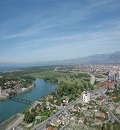
Meet at airport with our guide and drive for about 1hour 45 minutes to Shkodra the most important town in the North of Albania. Shkodra was the capital of an important Illyrian Kingdom in the 3rd century BC, with its centre where the Rozafa fortress is situated today upon entry into the modern city. Shkodra was also the centre of the Roman Catholic minority in Albania due to its traditional centuries old ties with Venice. In fact Italian architecture is present also in the buildings of the beginning of the 20th century. We will take a walk in the newly renovated pedestrian area of Italian and Austrian architecture influences, testimony to this town historic links with both these countries. Overnight at traditional hotel (dinner can be had at its wonderful traditional stone restaurant).
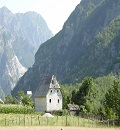
After early breakfast we drive towards Lake Shkoder in Koplik and then turn to the right through lavender fields before starting to climb through stunning limestone mountains . Once the road reaches Boga village, we twist and turn past breathtaking scenery and arrive at the mountain village of Theth in the middle of the Thethi National Park, passing through the neck of Thore. After unloading our discovery equipment we will take a familiarization tour of the village lasting between 3-5 hours, staring with the church of Thethi originally built in 1892, rebuilt and reroofed in 2005. Roughly opposite the church across a field is the “Kulla e ngujimit” or “Lock-in Tower” which can be seen only from outside, testimony to a system of rigid and cruel codes to the modern visitors, but which has regulated an isolated lifestyle in these far away mountains, for centuries. Another inaccessible monument inside, the old water-mill, situated just below the tower was used by the locals to grind corn. Then we walk up the mill, following a footpath leading to the bridge of Gerla which hangs more than 30metres above Thethi canyon which is wide only 2 metres providing a spectacular site. At the wonderful Grunasi waterfall the waters plunges tens of metres into a deep pool, and its crystal clear water is so cold that any thoughts of a swim will be quickly dispelled, the moment it reaches your ankles. Overnight at local guest house in Theth village.
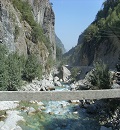
Walk to Valbona through some of the wildest scenery into the Tropoje District, known as the home of Albanian folk culture. We walk for about 8 hours through forests and alpine pastures and from Valbona pass (1950m), we take a few moments to enjoy the spectacular views down Valbona and Theth Valley. As we pass Valbona River, some beautiful waterfalls and the quaint village of Rragam, our luggage is transported by horse to the next guesthouse. The National Park of Valbona valley is situated 30 kilometres north-west of the town of Bajram Curri. It has a surface of about 8,000 hectares. This park is considered a miracle of the Albanian Alps offering an amazing diversity in shapes, forms, colours, flora and fauna. The forests and pastures, the rivers and alpine lakes, the miscellaneous flowers, the characteristic houses and the hospitality of the inhabitants altogether create a unique place which can be explored on different levels. Our journey of today will provide you with plenty of material to satisfy your senses and brag about to friends and family. During the communism period , only members of the government, locals and authorized forest technicians and a handful of important visitors from foreign countries with which Albania had political relations – such as Russia, Bulgaria, Poland - were allowed to enter this region needed a special authorization from the government. Luckily the beauty of Valbona is nowadays available for all to explore and respect. Overnight at local guest house.
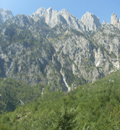
Our route today takes us through beech and pine forests down Rosi Peak and leads us onto the “White Circle”, where we enjoy panoramic views across the peaks and valleys of the Albanian Alps (approx. 6 hours walk). Valbona Valley is part of Tropoja district which in turn falls under the Albanian Alps with numerous mountains reaching a height of above 2,000 meters. There are mountainous massifs like the Eastern Block of Jezerca (its peak is 2,694 meters high). The Block of Maja e Hekurave (2,561 m) is distinguished for its asymmetric slopes and the peak which has a conical form. Shkelzeni peak (2,407 m) lies among the tectonic formations and has a pyramidal shape. The ridge is covered with forests of oaks, beech wood and some conifers up to the carbonic slopes whereas on the top there are some alpine pastures. Overnight at local guest house.
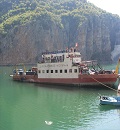
An early morning departure to take the Koman Lake ferry. A spectacular boat trip through the artificial lake created by the hydropower stations built on Drin River. The depth of the lake has given it an opal green colour while the surrounding mountains have created the magnificent effect of a fjord. After the trip ends we drive toward Kruja, the Albanian centre of resistance against the Ottoman invasion led by the Albanian National Hero, Scanderbeg. He kept the Ottomans engaged in Albanian territories for 25 years during the 15th century, thus hampering their progress north into Western Europe. This was recognized by the pope of the time who named Scanderbeg “Athleta Christi” translated Champion of Christ. Visits the Scanderbeg museum where we gain an incredible amount of knowledge about Albanian history, and also Kruja’s Ottoman bazaar, the best place in Albania to find handmade, traditional crafts. After visits depart to the capital Tirana for overnight.
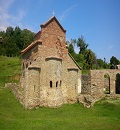
After we continue “Kepi i Rodonit” a wonderful Cape only 55 km from the Capital. Here we take a walk in the beautiful natural small peninsula which has much to offer. As we walk we explore the history of Albania from the 15th century at the Church of St Anthony, one of the oldest in Albania thought to have healing powers, to its communist recent past with anti-aircraft huge bunkers built by the regime thinking of a possible “enemy” Invasion. We walk through lush vegetation for about 2 hours and explore the place called Scanderbeg castle at the edge of the Cape overlooking the sea. After the visit return to Tirana to take a driven tour of the main sites of the capital and visit the National Historic Museum which gives an in depth introduction to Albanian history. Overnight In Tirana.
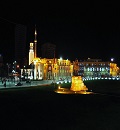
After breakfast we drive to Berat known as the museum town of a “one over one windows” due to the fact that its characteristic houses are built on a slope and have many windows which to observes seem as if the windows stand on top of each other. It has been listed by UNESCO as a World Heritage Site and it is a must visit place in Albania. Berat castle is of particular interest as people still live within its walls in their traditional houses, as have their ancestors for centuries. The castle used to have over 40 churches of which 7 still remain including St. Mary’s church turned into Onufri Museum. Onufri was a famous Albanian Icon master painter of the 16th century who painted many orthodox churches in Albania and Greece, using a special red colour. We suggest lunch in the castle at the little place of a family which serves homemade specialities. After visits return to Tirana for overnight with a stop to visit the centre of Durres with its ancient amphitheatre considered the biggest in the Balkans.
After breakfast you are left free to explore on your own until time of transfer to Airport for the flight back.
Best months: March, April, May, June, September, October, November
Note: The above dates are for orientation purposes, to help people book on the same dates, and pay the cheaper price. However we will run this tour on other dates as per clients’ requests.
We had a wonderful week in Albania and want to return to the mountains to walk again one day. Many thanks for all the help with hotel bookings and the advice about Lake Koman. We thought the hotels you recommended were just right for us and everyone was very kind and helped us with buses and taxis. We really loved the Lake Koman trip and the high road down to Puka, which was wonderful. Many thanks again and we will contact you next time.